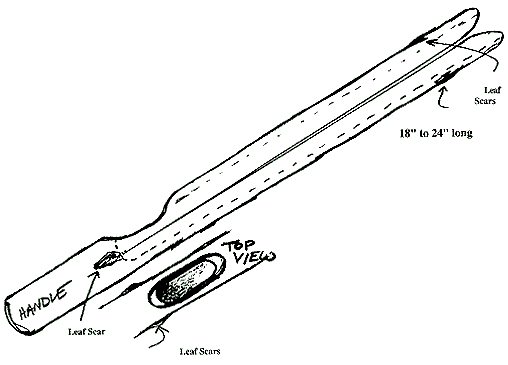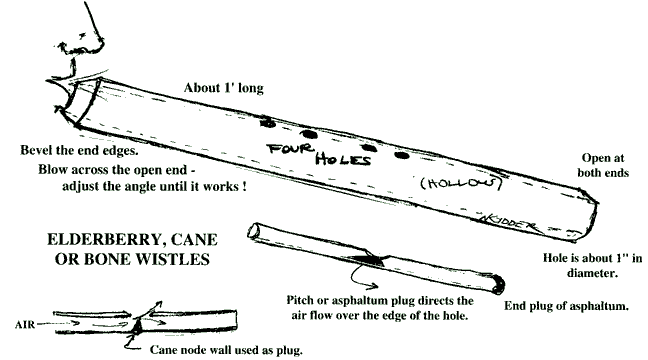
Throughout Central California and beyond, music and dance were the media of communication with the world of 'spirits'. Songs were received from this realm during dreams or trances, and had associated powers enjoyed by the owner of the song. Songs were employed in hunting to 'charm' the spirit of the animal, during food preparation to guarantee proper results, in gambling to draw on the help of supernatural powers, in courtship to bring divine assistance to the cause of love, in ceremonies to communicate with the creative forces to restore or maintain harmony in the world, or simply to build your relationship with power (which is often called medicine). Songs were sung to greet the sun each morning, thanking it for returning to maintain its regular habits. In a world totally controlled by unseen forces, song and its visible representation, dance, were the means of maintaining the perfection of creation. The dances of the Northwest coast of California are called World Renewal dances, in Australia, men followed maps, called songlines, to periodically re-sing the world into existence, or else it might fade. In much of 'pre-contact' society, music and dance were anything but mere amusement.
The instrument most often associated with Indian dances in America today is the drum. The steady rhythm of the drum is likened to the heartbeat of the earth. In some parts of north central California, a section of hollow log was placed over a trench and pounded with feet or poles to produce a drum-like sound, but the skin covered drum was unknown until the arrival of Europeans. In it's place, various types of rattles took over the role of rhythm instrument.
The most common, and widely used rattle form was the split stick rattle, or clap-stick. The simplest was a piece of elderberry, bay or other straight grained wood (now also bamboo) about 2 feet long which was split length-wise, leaving an unsplit handle. Any pithy center was removed, and the stick was struck against the opposite hand to produce a clacking sound. If the split was controlled to approach one side, it produced a looser half which could be made to clap against its partner by snapping the arm with a stiff wrist in the air, creating a sound that has been compared to castanets. The same effect was achieved by carving away wood at the base end of one side (then the top) to make it limber enough to snap in the air. These rattles were used by the members of the chorus which accompanied ceremonial dances, and sometimes during gambling and doctoring. Today, these instruments, often made of bamboo and called batons, or just bats, are used by singers to establish the rhythms of the dances. One singer in particular, known as the rock, is responsible for controlling the movements of the dance while the others concentrate on the song.

Rattles may show up during other kinds of singing as well. Doctors of many specialties use rattles made of deer toes, large moth cocoons, or the split sticks to accompany their power songs as they call upon spirits to help cure an illness, bad weather, or other disharmony which needs 'fixing'.
Whistles also served as rhythm instruments, and were used mainly by the dancers (it would be hard for the singers to blow them). They were made either of elderberry, cane, or hollow bones, had a single hole cut near the middle with a plug of pitch or asphaltum to aim the air flow against the edge of the central hole. The combination of clap sticks, voices, whistles and movement create a rich tapestry that is certainly enthralling to the audience of people, and I assume to the spirits as well.
Two other instruments are known from our area which were used in more personal contexts. The musical bow was sometimes made for the purpose, although a hunting bow might also be used. One end of the bow wood is held against the teeth, and the string plucked or hit with an arrow or stick. Varying tension on the string can produce a range of tones. The sound is only clearly heard inside the head of the musician, making this a private experience. The last musical instrument known from the 'old days' was the flute.
Except for the Mohave peoples of southern California who used a typical plains type flageolet (the love flute still popular today) the remainder of groups used a simple open ended flute. This was made from a hollowed elderberry tube, with the ends beveled, and four holes burned or drilled in line along the center of the tube. It is played by blowing across the open end at an angle that will produce the flute-like note. The four holes change the note, but are not standardized into a specific scale. Each flute produces it's own music. Some flutes were played from either end, producing two different scales. At times the players added complexity to the sound by humming as they blew, creating a type of harmony. These flutes were used in courtship of both future wives and possible spirit helpers. The flute is simple to make but takes considerable practice to master. Receiving a powerful song with the aid of the flute however, would provide lasting benefit to the musician. (Songs were owned, and only worked for the original receiver, although others might sing them.)
To make any of these instruments you must first find an appropriate piece of elderberry (Sambucus sp). If possible, harvest in the winter from a tree growing in a canyon where it gets enough sun light to grow strong, but not so much that it doesn't have to grow straight. If possible, let the piece dry completely (stripping the bark speeds this process), as it will be easier to work and won't warp later. Also, elderberry juice is poisonous, so don't put green elderberry in your mouth. (Some people react to elderberry juice and get a skin rash.)
For a flute, cut a piece about an inch or inch and a quarter in diameter, and 9-12 inches long, cutting through a node at each end if possible. Check to see how much of the cross section is wood, and how much is soft and pithy. The ideal for a flute is a minimum of 1/8 inch thick ring of wood, to a maximum of 3/16 of an inch. After the piece has dried, gouge out the pithy center using a hard stick with the end cut to a chisel edge. Smooth and polish the inside. Cut or grind the edges of the tube to a bevel from the outside (see illustration). Draw a line down the length of the tube and mark four points along it for the holes. Placement of the holes is determined by ease of fingering. Often holes were paired, with two fingers of each hand covering a set of holes. If the holes are not centered down the length of the tube, a different scale is produced by blowing each end. I use a piece of coat hanger wire heated red hot on a stove to burn in the holes.
To play the flute, cover the holes and get comfortable, it could take a while. Hold the end of the flute to your lower lip, which should cover almost all of the opening. Tip the tube down at about a 45 degree angle, and blow across the upper edge of the flute, changing the angles until a flute-like sound is made. I find I'm almost whistling at the point where it works. Then uncover the holes to get notes.
It took me a long time to get a sound, and holding the angle requires real concentration.
To make a clap stick, find an elderberry branch between 1 and 1 1/2 inches thick, and 1 1/2 and 2 feet long. If possible, cut it so that there is a natural handle formed at one end by a leaf node. The wood thickness should be greater than for a flute, with 1/4 inch thick sides ideal. Strip off the bark and dry. Split the end away from the handle by first picking a line that will split between any leaf scars present on the 'working' end, and ending at the leaf scars forming the handle. Set a wedge or knife blade on your line and carefully split the stick down to just short of the handle. Its better to split too short than too long. If the split was successful, carefully pull the two sides just far enough apart to slip a knife between them and cut away some of the pity core. Once you have created an open channel down the center of the stick use a long hard reamer to push out and break up the remaining pith down to the handle. At this point, hitting the clapper against your hand or leg should produce the clapping sound. If not, slip a thin piece of bark, buckskin, or such down to the bottom of the split to spread it slightly. To make the instrument more responsive, pick the half of the clapper that seems the looser, and make it progressively more so by cutting away wood just above the handle (see illustration) until it flaps easily, but doesn't break.
Playing the clapper is done by slapping against anything, or by snapping in the air while keeping the wrist stiff. If you round the ends as in the drawing, the dapper can be played by rolling down the fingers on the way to the leg, creating even more rhythmic possibilities.

This article was first published in The
Bulletin of Primitive Technology (Spring 1995, #9)
E-mail your comments to "Norm Kidder" at atlatl1@aol.com
We hope the information on the PrimitiveWays website is both instructional and enjoyable. Understand that no warranty or guarantee is included. We expect adults to act responsibly and children to be supervised by a responsible adult. If you use the information on this site to create your own projects or if you try techniques described on PrimitiveWays, behave in accordance with applicable laws, and think about the sustainability of natural resources. Using tools or techniques described on PrimitiveWays can be dangerous with exposure to heavy, sharp or pointed objects, fire, stone tools and hazards present in outdoor settings. Without proper care and caution, or if done incorrectly, there is a risk of property damage, personal injury or even death. So, be advised: Anyone using any information provided on the PrimitiveWays website assumes responsibility for using proper care and caution to protect property, the life, health and safety of himself or herself and all others. He or she expressly assumes all risk of harm or damage to all persons or property proximately caused by the use of this information.
© PrimitiveWays 2013